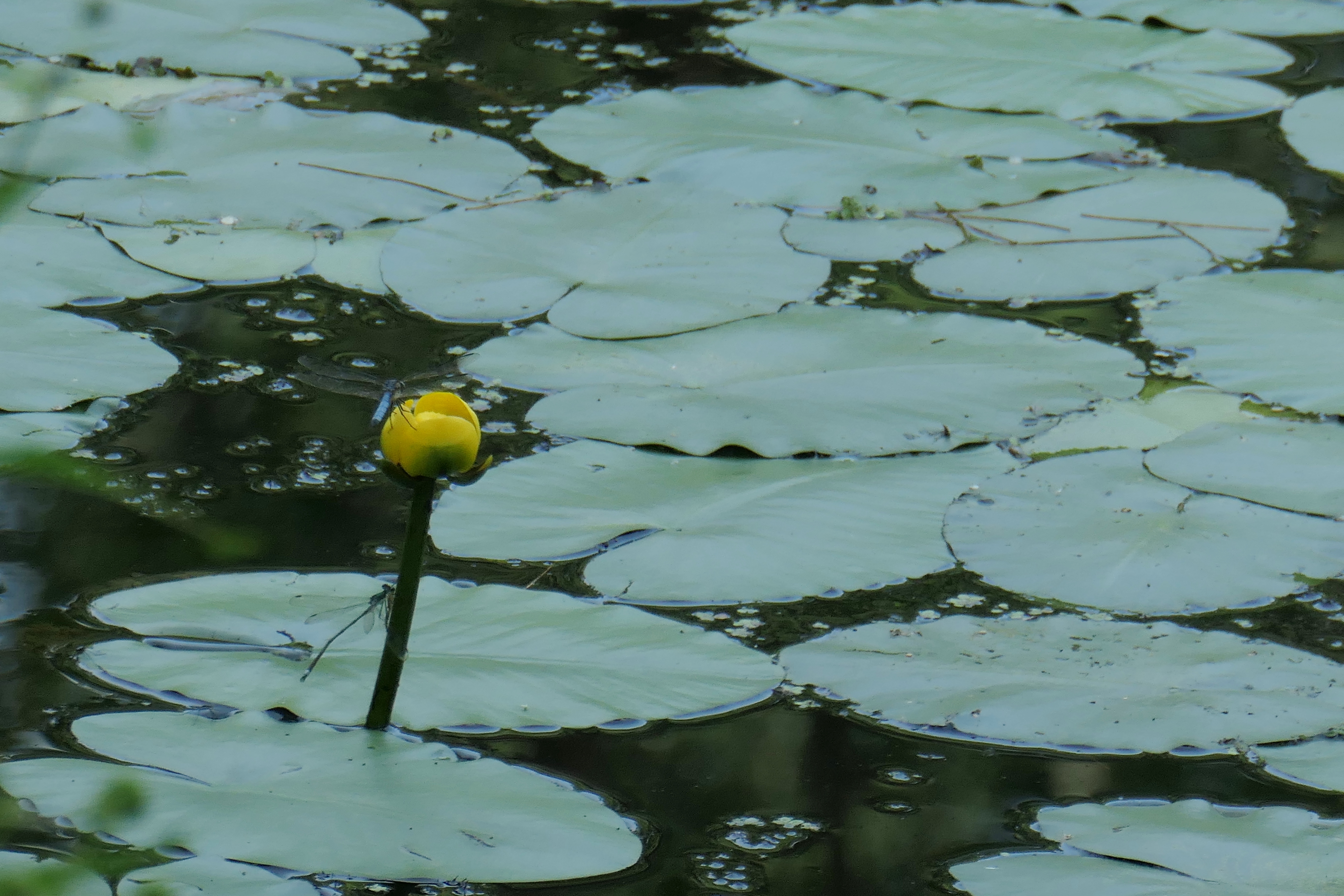And now for something utterly different, simply because of my chance to sit still and photograph a few dragonflies recently – and my sense that it’s been way too long since we looked at nature….

Here are some facts:
(All taken from this article here, which had a nice summary of the topic.)
1 ) Dragonflies were some of the first winged insects to evolve, some 300 million years ago. Modern dragonflies have wingspans of only two to five inches, but fossil dragonflies have been found with wingspans of up to two feet.
2 ) Some scientists theorize that high oxygen levels during the Paleozoic era allowed dragonflies to grow to monster size.

3 ) There are more than 5,000 known species of dragonflies, all of which (along with damselflies) belong to the order Odonata, which means “toothed one” in Greek and refers to the dragonfly’s serrated teeth.
4 ) In their larval stage, which can last up to two years, dragonflies are aquatic and eat just about anything—tadpoles, mosquitoes, fish, other insect larvae and even each other.

5 ) At the end of its larval stage, the dragonfly crawls out of the water, then its exoskeleton cracks open and releases the insect’s abdomen, which had been packed in like a telescope. Its four wings come out, and they dry and harden over the next several hours to days.
6 ) Dragonflies are expert fliers. They can fly straight up and down, hover like a helicopter and even mate mid-air. If they can’t fly, they’ll starve because they only eat prey they catch while flying.

7 ) Dragonflies catch their insect prey by grabbing it with their feet. They’re so efficient in their hunting that, in one Harvard University study, the dragonflies caught 90 to 95 percent of the prey released into their enclosure.
8 ) The flight of the dragonfly is so special that it has inspired engineers who dream of making robots that fly like dragonflies.

9 ) Some adult dragonflies live for only a few weeks while others live up to a year.
10 ) Nearly all of the dragonfly’s head is eye, so they have incredible vision that encompasses almost every angle except right behind them.

11 ) Dragonflies, which eat insects as adults, are a great control on the mosquito population. A single dragonfly can eat 30 to hundreds of mosquitoes per day.
12 ) Hundreds of dragonflies of different species will gather in swarms, either for feeding or migration. Little is known about this behavior, but the Dragonfly Swarm Project is collecting reports on swarms to better understand the behavior. (Report a swarm here.)

13 ) Scientists have tracked migratory dragonflies by attaching tiny transmitters to wings with a combination of eyelash adhesive and superglue. They found that green darners from New Jersey traveled only every third day and an average of 7.5 miles per day (though one dragonfly traveled 100 miles in a single day).

Bonus for nature lovers: here is one of the earliest film makers exploring the secrets of nature, dragonflies included:
https://www.atlasobscura.com/articles/f-percy-smith-nature-films
Music is two very different pieces with Dragonfly titles. Why not.
https://www.youtube.com/watch?time_continue=15&v=8aJrH3wKYvs
https://www.youtube.com/watch?v=EPUHs9cjhOs





Martha Ullman West
What a gorgeous post, photos of course but text and musical interludes as well. Dragonflies have long fascinated me, I can remember watching them in New Hampshire when I was in my early teens, and summers were long and lazy. Now I know much more about them, thanks to you.
Tricia
Lovely! Thank you.